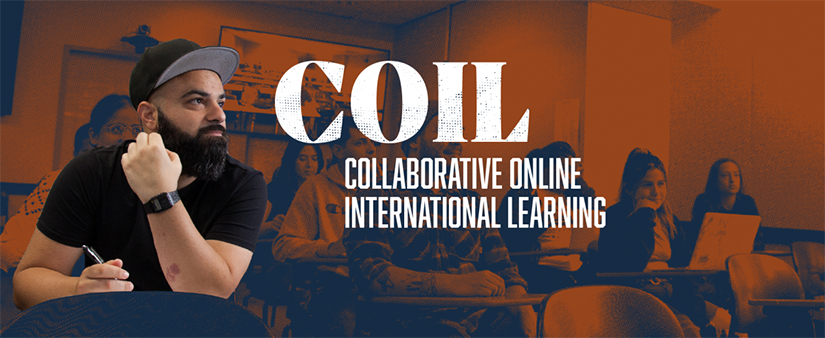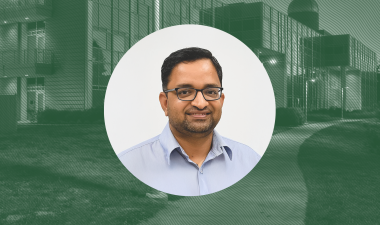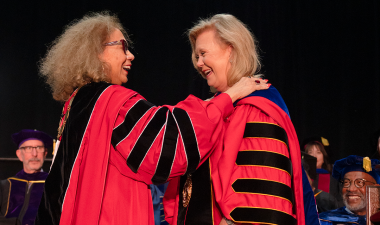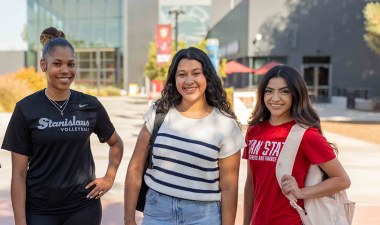
The world will open itself to Stanislaus State faculty and students in a new way with the arrival of the Collaborative Online International Learning (COIL) program.
“It’s going to give people access to a form of global learning that hadn’t been available to them in the past,” said Betsy Eudey, director of gender studies and the person most responsible for bringing COIL to Stan State, adding to a rich study abroad program and faculty research with international partners.
COIL, a growing program designed to expand cultural understanding, links international students virtually to collaborate on a project. The faculty members decide how much time to spend on the project — usually four to 10 weeks — and it can be included in a face-to-face or a virtual course.
“It allows faculty to learn more, and for our students to experience things they otherwise would not,” said Helene Caudill dean of Extended and International Education, who is excited to house COIL in her department.
Begun by State University of New York in 2004, COIL is arriving at Stan State as the University begins to emerge from pandemic-induced online learning, which is beneficial.
“We already have faculty comfortable with virtual technologies for teaching,” Eudey said. “We have spent a year learning to convert projects into online environments.”
Eudey, who will serve as Stan State’s interim COIL coordinator, will teach the University’s first COIL course. She’ll partner her gender, environment and sustainability course with a course that addresses gender and human rights issues at the Tec de Monterrey in Mexico City. Her students will work with students in Mexico City to study food insecurity.
She’s in the process of organizing the project with her counterpart, navigating language and time zone differences.
Teaching the class will prepare her to help colleagues interested in adding COIL to their classes.
“We want to grow in a smart manner, so a faculty member understands the process and has the support needed to develop the relationship with the faculty member at the other institution,” Eudey said. “Developing shared assignments isn’t easy. You’re working with two different courses with complimentary but slightly different learning outcomes and grading processes, and maybe you have language barriers. There are a lot of things that have to go into this.”
Eudey was familiar with the program when she learned in February of Florida International University’s COIL leadership institute workshop. She enlisted Shradha Tibrewal, director of the Faculty Center for Excellence in Teaching and Learning (FCETL) — a position Eudey once held — and Caudill, who said she’d thought about adding COIL to her department for some time, to join her.
The three attended the extensive course in April and May and COIL, with the support of President Ellen Junn, the Office of Academic Affairs, including college deans, department chairs and faculty members, became a reality at Stan State.
Caudill agreed to fund the program through the Office of Extended and International Education, saying she hoped placing it under her department would strengthen the program’s foundation and facilitate its longevity.
With the same goal of a strong COIL launch, Eudey agreed to serve as interim COIL coordinator. Part of her job will be to find more international faculty to partner with Stan State colleagues on COIL class projects. The goal is to build on Eudey’s fall COIL class and have more opportunities in spring 2022.
Tibrewal and Eudey held one COIL orientation workshop in June, and 20 faculty members attended. Some are among the 14 who have submitted faculty interest forms through the Stan State COIL website.
In the fall, Tibrewal and Eudey will begin leading Faculty Learning Communities on COIL.
Support from academic technology is the other critical component of the program.
Eudey is convinced COIL can succeed at Stan State because of faculty, some of whom are already engaged with faculty in other universities, and because of the students.
“So many of our students are within one or two generations of coming to the United States and California, or their families have strong cultural roots even if they’ve been here a long time,” Eudey said. “I think the opportunity to have cultural experiences outside the United States is valued.”
Beyond that, Eudey said, the opportunity is priceless for students and faculty.
“To have assignments where students develop content mastery and have this cultural exchange is an experience they’re going to remember well after the end of the course,” Eudey said.
Caudill sees another advantage.
“We want our students to experience all the richness involved with cultures you can’t always get if you can’t travel, which none of us could last year,” Caudill said. “While we’re moving forward with our study abroad, COIL enhances and sometimes is a pathway into study abroad.”


